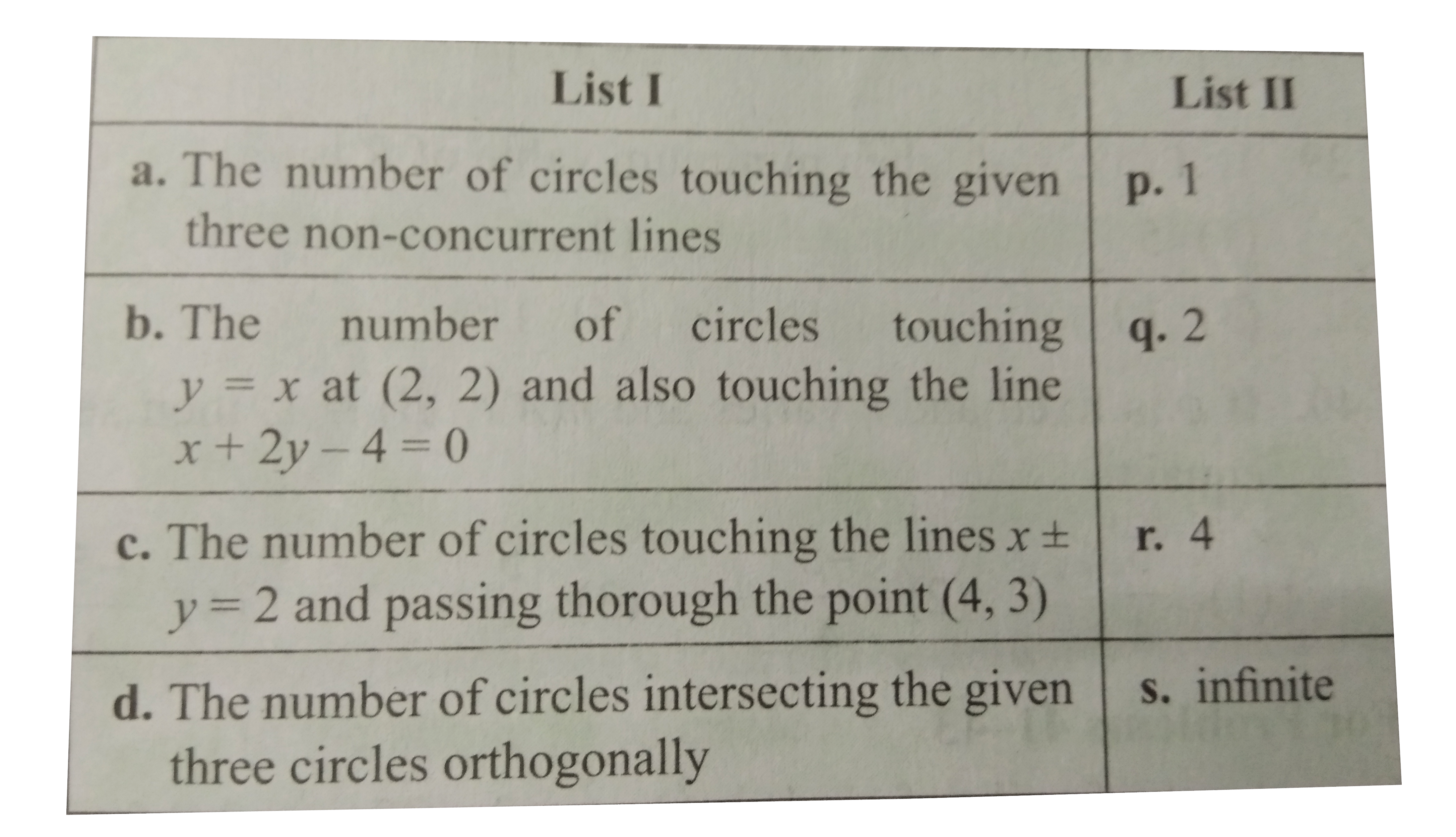If (1+x)n=C0+C1x+C2x2+...+Cnxn, then C0C2+C1C3+C2C4+...+Cn−2Cn= a. (2n)!(n!)2 b. (2n)!(n−1)!(n+1)! c. (2n)!(n−2)!(n+2)! d. none of these
(2n)!(n!)2
(2n)!(n−1)!(n+1)!
(2n)!(n−2)!(n+2)!
none of these
The correct Answer is:C
(1+x)n=C0+.nC1x+.nC2x2+.nC3x3+.....+Cn−1xn−1+Cnxn (1)
(x+1)n=C0xn+C1xn−1+C2xn−2+....+Cn−1x+Cn (2)
Multiplying Eqs. (1) and (2) and equating the coefficient of xn−2. we get
C0C2+C1C3+C2C4+.....Cn−2Cn
= coefficient of xn−2 in (1+x)2n
=.2nCn−2
=(2n)!(n−2)!(n+2)!
Topper's Solved these Questions
- BINOMIAL THEOREMBook:CENGAGE ENGLISHChapter:BINOMIAL THEOREMExercise:Multiple Correct Answer Type
Explore 27 Videos
- BINOMIAL THEOREMBook:CENGAGE ENGLISHChapter:BINOMIAL THEOREMExercise:Linked Comphrension
Explore 20 Videos
- BINOMIAL THEOREMBook:CENGAGE ENGLISHChapter:BINOMIAL THEOREMExercise:Concept Application Exercise 8.8
Explore 10 Videos
- AREABook:CENGAGE ENGLISHChapter:AREAExercise:Comprehension Type
Explore 2 Videos
- CIRCLE Book:CENGAGE ENGLISHChapter:CIRCLE Exercise:MATRIX MATCH TYPE
Explore 7 Videos
Similar Questions
The value of x in the expression (x+x(log)10x)5 if third term in the expansion is 10,00,000 is/are
a. 10 b. 100 c. 10−5/2 d. 10−3/2
View SolutionThe sixth term in the expansion of (√2log(10−3x)+(2(x−2)log3)15)m is equal to 21, if it is known that the binomial coefficient of the 2nd 3rd and 4th terms in the expansion represent, respectively, the first, third and fifth terms of an A.P. (the symbol log stands for logarithm to the base 10) The value of m is
View SolutionIf the third term in the expansion of (1+x)mis−18x2, then find the value of m.
View SolutionIn the following figure, the graphs of two functions y = f(x) and y = sin x are givne. They intersect at origin, A(a,f(a)),B(π,0)andC(2π,0).Ai(i=1,2,3) is the area bounded by the curves as shown in the figure, respectively, for x∈(0,a),x∈(a,π),x∈(π,2π).
If A1=1+(a−1)cosa−sin a, then

The function f(x) is
View SolutionMatch the following lists.

View Solution(1+x)n=c0+c1x+c2x2+...+Cnxn
হলে দেখাও যে,c0c1+c1c2+c2c3+...+cn−1cn=2n!(n+1)!(n−1)!
View Solution(1+x)n=c0+c1x+c2x2+...+Cnxn
হলে দেখাও যে,c0cr+c1cr+1+c2cr+1+...+c(n−r)cn=2n!(n+r)!(n−r)!
View SolutionIf (1+x)n=C0+C1x+C2x2+……….+Cnxn , prove that :
C0+C12+C23+…….+Cnn+1=2n+1−1n+1
View SolutionC0C2+C1C3+C2C4+……..+Cn−2Cn=
View SolutionIf (1+x)n=C0+C1x+C2x2+….....+Cnxn, then C0+2.C1+3.C2+….+(n+1).Cn=
View SolutionProve that .nC0.2nCn−nC1.2n−2Cn+nC2.2n−4Cn≡2n.
View SolutionProve that nC2n0Cn−nC2n−11Cn+nC2×2n−2Cn++(−1)n^nCnnCn=1.
View SolutionIf (1+x)n=C0+C1x+C2x2+...+Cnxn, then C0C2+C1C3+C2C4+...+Cn−2Cn= a. (2n)!(n!)2 b. (2n)!(n−1)!(n+1)! c. (2n)!(n−2)!(n+2)! d. none of these
View SolutionFor all positive integers n, show that 2nCn+ 2nCn−1=12( 2n+2Cn+1) .
View SolutionThe middle term in the expansion of (2x3−32x2)2n is a. 2nCn b. (−1)n 2nCn x−n c. 2nCnx−n d. none of these
View SolutionProve that C0C2+C1C3+…+Cn−2Cn=2nCn−2
View Solution
